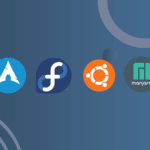Mac and Windows continue to change the computing world in 2024. Both systems have millions of loyal users worldwide. Windows leads the market with a 69% share, while Mac OS grows steadily at 21%. These numbers show how both platforms affect our daily computing lives.
You’ll find everything you need to know to choose between a Mac or PC laptop that matches your needs. We’ll look at performance, accessible interface design, software compatibility, security features, mobile device integration, and value for money. This explanation will help you make the right choice based on your priorities.
Performance and Hardware Options
Apple’s transition to custom silicon has significantly changed the hardware differences between Mac and Windows platforms. This major change has created unique performance characteristics that distinguish each platform.
Processing power comparison
Apple’s M3 series processors showcase remarkable capabilities in specific workloads. The M3 Max MacBook Pro delivers outstanding single-core performance and stands as a match for the Intel Core i9-14900K in multi-core tasks 1. Windows PCs equipped with AMD Threadripper PRO CPUs outperform Apple’s offerings by 3-4x when handling intensive workloads 1.
The processor’s architecture reveals a key difference – Apple’s ARM-based silicon adopts a unified memory approach, while Windows PCs separate their CPU and GPU memory pools 2. This design allows Macs to accommodate larger GPU memory pools but might result in smaller CPU memory allocations 2.
Graphics capabilities
Graphics performance varies by a lot between platforms:
- Apple’s integrated graphics are exceptionally efficient for creative applications. Photoshop runs 80% faster on M1 chips compared to previous Intel versions 3
- Windows PCs deliver superior gaming and professional rendering capabilities through discrete NVIDIA and AMD GPUs 4
- Apple’s best GPU delivers about half the performance of an NVIDIA RTX 4080 SUPER or 4090 mobile 1
Available device types and form factors
Windows PCs give you more hardware choices than what you’ll find in the Mac ecosystem. Apple makes elegant, well-built devices, but Windows machines come with several advantages:
- Diverse Form Factors
- Convertible laptops with touch screens
- Traditional desktops and laptops
- Gaming-specific devices
- VR headsets and specialized hardware 5
- Customization Options
- Parts you can upgrade yourself
- Many port configurations
- Choice of different manufacturers
- Build-it-yourself options 6
Performance comparison isn’t simple – Macs are great at power efficiency, and the latest MacBooks can run for 22 hours compared to 11 hours on similar Windows laptops 7. But Windows PCs pack more raw performance punch through high-end components that you can upgrade 6.
Professional applications need different approaches based on your workflow. Macs perform well in Photoshop and After Effects 8, but Windows PCs lead in CPU-heavy rendering tasks and programs that use NVIDIA’s CUDA technology 1.
User Interface and Experience
A key difference between macOS and Windows lies in their user interface. These operating systems have unique approaches that shape how people interact with their computers.
Desktop environment and navigation
These operating systems are different in their core design philosophies. macOS features a clean interface that stays consistent in all native applications 9. The system has a persistent Dock that gives access to common shortcuts and applications. Windows takes a different approach with its Start Menu and Taskbar for navigation 9.
File management works differently on these platforms. Windows File Explorer provides a feature-rich environment with Quick Access, which helps users find their recent files easily. The macOS Finder has a simpler approach, though some users find it harder to perform complex file operations 5.
Customization options
Windows gives users powerful ways to personalize their experience. The platform includes:
- Flexible window management options
- Customizable Start menu layouts
- Personalized taskbar configurations
- Advanced display and theme settings 10
MacOS takes a different approach with limited but refined customization features. Users can manage their menu bar items through utilities like Bartender 9. The system’s Dark Mode, desktop customization, and screen management options work within specific boundaries that maintain Apple’s design philosophy 5.
Ease of use for beginners vs power users
macOS welcomes newcomers with its easy-to-use design and consistent interface 11. The system works great for users who want things to “just work” without digging into system settings.
Power users tend to prefer Windows because it fits their needs better. Windows lets users customize deeply and create more complex workflows 10. Windows 11 added new features, but users have spotted some design and performance issues 12.
Each platform helps boost productivity in its own way. macOS has tools like Automator that create advanced workflows and lets users automate complex tasks through Apple Script 11. Windows responds with solid touch screen support and works with older software, making it work well on different devices 13.
Your choice between these interfaces depends on what you want to do with your computer. macOS focuses on giving users a smooth, efficient experience that works well with creative tasks 14. Windows shines by letting users customize their computing setup exactly how they want it 10.
Software Ecosystem and Compatibility
Software compatibility is a vital consideration when comparing operating systems. Each platform provides unique advantages that cater to different user needs.
Available applications
Windows rules the desktop operating system world with over 74% market share 15. This means Windows users can access more software options, especially when you have business and custom applications. Mac computers come with a cleaner software setup and avoid the bloatware that often clutters new Windows PCs 16.
Both platforms support major productivity suites including:
- Microsoft 365
- Adobe Creative Cloud
- Google Workspace
- Salesforce
- QuickBooks
Mac users get exclusive access to Apple’s iWork Suite, while Windows users have more options with custom business applications 16.
Gaming support
Gaming stands out as one of the most important differences between these platforms. Windows dominates the gaming space and with good reason too 5:
| Gaming Aspect | Windows | Mac |
|---|---|---|
| Game Library | Extensive Steam catalog | Limited selection |
| Hardware Support | Customizable components | Limited upgradeability |
| Peripheral Support | Wide range of gaming accessories | Simple controller support |
| Performance Tools | Game Bar, Game Mode, Auto HDR | Simple gaming features |
Mac gaming shows promise lately. Apple’s Game Porting Toolkit and popular titles like Death Stranding mark positive changes. But Mac versions typically launch years after their Windows counterparts 17.
Professional software options
Software availability varies by a lot based on industry focus. Macs shine in creative fields and offer smooth integration with industry-standard software like Adobe Creative Suite 15. MacOS’s Unix-based architecture gives developers an edge with better terminal command compatibility and access to development tools 18.
Windows stands out in data analysis and its coverage, especially when you have Microsoft Excel’s improved feature set 15. The platform also provides better support for custom business applications and specialized industry software.
Cloud-based solutions and virtualization tools have boosted cross-platform compatibility by a lot. Professional users can utilize various compatibility layers like Wine, CrossOver, and Parallels to run Windows applications on Mac systems 19. Creative professionals can maintain optimized workflows across both platforms with this flexibility, though some performance trade-offs might occur.
Mac’s Unix-based system gives developers a major advantage in development work. Nearly 90% of Linux-compatible tools work on macOS compared to just 30% on Windows 18. Developers who work with server-side technologies and cloud platforms find Mac particularly appealing because of this compatibility.
Security and Privacy Features
Security plays a vital role in today’s computing world. MacOS and Windows now use strong protection features that protect user data and maintain system integrity.
Built-in security measures
Mac and Windows systems use complete security architectures that differ by a lot in their approaches. Mac devices with Apple’s T2 security chip come with the Startup Security Utility that offers three-layer boot protection through firmware password protection and Secure Boot 20. Windows provides its Secure Boot option and Trusted Platform Module (TPM) that needs cryptographic approval to start the system 20.
Mac’s built-in security framework has:
- Gatekeeper for software verification
- XProtect for malware detection
- Notary service for app screening
- Sandboxing for application isolation 20
Windows Security, which was previously Windows Defender, delivers live protection against threats and combines firewall protection, device security, and complete virus scanning capabilities 20.
Update frequency and support
Windows and macOS platforms follow different update patterns. Windows releases security updates monthly on the second Tuesday to deliver security patches and bug fixes 21. MacOS updates come less often, usually every 2-3 months, but pack more changes 21.
The platforms handle updates differently. Windows pushes smaller, targeted updates while macOS delivers larger packages that can reach 2.44 GB in size 22. These differences highlight each platform’s unique approach to system maintenance and security updates.
Data protection capabilities
MacOS and Windows both provide reliable encryption to keep user data safe. MacOS comes with FileVault, a built-in encryption tool that uses XTS-AES-128 encryption with a 256-bit key 20. Windows protects data through BitLocker, which stores a recovery key on the hard drive and needs a security PIN to access 20.
Here’s what the privacy comparison shows:
| Aspect | macOS | Windows |
|---|---|---|
| Attack Rate | Lower frequency but growing | Higher frequency, more targeted 23 |
| Threat Volume | Growing at 2x Windows rate (2020) | More established threat patterns 23 |
| Browser Security | Safari with ad-blocking | Edge with SmartScreen protection 20 |
| Data Collection | Limited third-party sharing | More extensive telemetry 20 |
Mac’s traditionally lower attack rate seems to be changing. The number of threats targeting each Mac is now growing twice as fast as those aimed at Windows PCs 23. This trend suggests that Apple’s increasing market share makes their platforms more tempting targets for attackers 24.
MacOS takes a stricter approach to privacy, especially when it comes to data collection and third-party access 20. Windows has better privacy settings now, but still gathers more telemetry data than macOS 25. Users can track and secure their lost devices through “Find My Mac” on Apple devices and “Find My Device” on Windows 20.
Integration with Mobile Devices
Mobile device integration is a key factor in modern computing, and different platforms have their own ways to connect phones with computers. The smooth connection between devices affects productivity and makes things more convenient for users.
Ecosystem synergy (iOS vs Android)
Apple’s unified approach creates exceptional synergy between Mac and iOS devices. Users enjoy features like automatic WiFi password sharing and continuous account synchronization between their devices 26.
The Windows experience varies based on the user’s mobile device choice. Microsoft’s Phone Link supports both Android and iPhone users, but Android devices offer more complete integration 5. Windows users can run multiple Android apps on their screens simultaneously. iPhone integration only allows texts, calls, and notifications 5.
File sharing and continuity features
File sharing capabilities vary by a lot between platforms:
Apple Ecosystem Features:
- AirDrop for instant wireless file transfer
- Universal Clipboard for cross-device copy-paste
- iCloud Documents and Desktop sharing
- Automatic device unlocking with Apple Watch [103, 93]
Windows users who have Android devices can choose from several options. OpenMTP works for wired connections, while alternatives like LocalSend enable wireless transfer 27. These solutions need third-party applications and extra setup, unlike Apple’s built-in integration.
Cross-device functionality
Different platforms offer varying levels of cross-device features. Apple’s ecosystem lets users:
- Answer phone calls from their Mac when their iPhone is on the same network
- Send SMS messages directly from macOS
- Move work naturally between devices
- Access iPhone hotspot functionality instantly 28
Windows takes a different approach to cross-device functionality with its Universal Windows Platform (UWP). This platform lets the same apps run on multiple devices 29. Microsoft’s Continuum feature allows select Windows Phones to create a desktop-like experience when connected to an external monitor 29.
Microsoft has made great strides and now matches Apple’s mobile-to-desktop integration for Android users 5. Apple still leads in smooth implementation and consistent features. The integration goes beyond simple functions and includes features like using an iPhone as an external webcam and an iPad as a secondary display 5.
Users often choose platforms based on their existing device ecosystem. Mac integration appeals more to iPhone users, even as Microsoft tries to close the gap with Apple’s ecosystem 30. Windows might be a better fit for users with devices from different manufacturers because it works with many platforms 30.
| Feature | macOS + iPhone | Windows + Android | Windows + iPhone |
|---|---|---|---|
| File Sharing | Native AirDrop | Third-party solutions | Limited options |
| Messaging | iMessage integration | Full SMS support | Basic SMS |
| App Continuity | Natural | Limited | Very limited |
| Device Syncing | Automatic | Manual setup required | Basic sync |
Price and Value Proposition
Mac and Windows’ financial implications go way beyond their original purchase price and include their long-term value, durability, and maintenance costs. Users can make better decisions that match their budget and needs by understanding these factors.
Original costs
Windows and Mac platforms have substantially different upfront hardware costs. Windows devices come with more price options, and laptops cost between $300-500. Mac laptops start at $999 for the MacBook Air 6. MacBook Pro’s high-end models can reach $7,199, while Windows laptops typically cost up to $5,000 31.
A detailed price comparison reveals:
| Device Type | Mac Starting Price | Windows Starting Price |
|---|---|---|
| Basic Laptop | $999 (MacBook Air) | $399 |
| Pro Laptop | $1,600 (MacBook Pro) | $500-3,500 |
| Desktop | $599 (Mac Mini) | $500 |
| Pro Desktop | $1,999 (Mac Studio) | Varies by configuration |
Operating system costs create additional price differences. MacOS comes bundled with Apple’s hardware, but Windows Enterprise subscriptions cost between $8 to $57 monthly per user 32.
Long-term value and durability
The total cost of ownership reveals a surprising truth beyond the price tag. IBM’s analysis shows that Mac devices save users about $535 per machine over four years compared to Windows PCs 33. Several key factors contribute to this cost advantage:
- Operational Lifespan: Mac devices maintain optimal performance for 6-8 years, while Windows devices peak at 4-5 years 31
- Build Quality: Apple’s commitment to premium materials and construction results in more durable devices 34
- Resale Value: Mac devices hold their value better and command higher prices in the secondary market 35
The M1 MacBook Air showcases this value proposition perfectly. Performance tests prove it surpasses Windows laptops that cost $500 more 36. Users report smooth performance even with less RAM, which optimizes daily operations 36.
Upgrade and repair options
Windows and Mac platforms take substantially different approaches to maintenance and upgrades. Windows devices give users more flexibility with:
- Component Upgrades:
- User-replaceable RAM
- Storage expansion options
- Graphics card upgrades
- Motherboard replacements 6
- Repair Accessibility:
- Large network of third-party repair shops
- Generic replacement parts
- Rich DIY repair resources 34
Mac devices have a more controlled repair environment where AppleCare+ helps manage long-term costs. Repair costs without coverage can be high, with charging system repairs costing between $500-600 37. Mac owners need to decide quickly about AppleCare+ because of its 60-day purchase window 37.
Repairability substantially affects total ownership costs. Windows PCs have these advantages:
- Lower repair costs from standardized components
- More repair service options
- Better DIY solutions 34
Mac repairs don’t happen as often but cost more because of:
- Proprietary components
- Few authorized repair centers
- Special service requirements 31
Volume licensing adds complexity to cost calculations for businesses and organizations. Windows provides flexible licensing that reduces per-device costs 32. Apple’s simple pricing makes things less complex but doesn’t give much room for large-scale deployments.
Different use cases show varying value propositions. The base M1 MacBook Air works great for everyday casual and academic use. It performs better than many higher-priced devices 36. Windows systems still lead in specialized scenarios that need specific hardware setups or upgrade options 5.
Conclusion
Mac and Windows systems show clear differences that match different user priorities in 2024. Windows remains the more versatile choice with its wide hardware options, better gaming capabilities, and extensive customization options. Apple’s Mac ecosystem shines with its uninterrupted device integration. The M-series chips deliver optimized performance, and the user experience works great especially when you have creative professionals and developers.
Your choice between these platforms depends on your personal priorities, workflow needs, and current device ecosystem. Windows gives you better software compatibility and affordable hardware options. Mac users get premium build quality, longer-lasting devices, and better ecosystem integration. Both platforms keep evolving to fix their limitations and deepen their core strengths for their target users.
References
[1] – https://www.pugetsystems.com/labs/articles/mac-vs-pc-for-content-creation-2024/?srsltid=AfmBOor53vSuE0CjZ2iDsQZ7U8nh6J2nEGY5NlpywBVvcT-uYHPqKCK_
[2] – https://www.pugetsystems.com/labs/articles/mac-vs-pc-for-content-creation-2024/?srsltid=AfmBOoqMsoZJPmk38wcoFFXfBXfd4w4f1RtzR0C74QIfcNUYjvhIQSx1
[3] – https://www.callthedesignguy.com/post/why-graphic-designers-use-mac
[4] – https://www.reddit.com/r/laptops/comments/1c684wx/windows_vs_mac_laptops_2024/
[5] – https://www.pcmag.com/news/macos-vs-windows-which-os-really-is-the-best
[6] – https://www.crucial.com/articles/mac-users/mac-vs-pc-the-pros-and-cons
[7] – https://www.macworld.com/article/670873/which-mac-processor-apple-processor-comparison-m1-vs-intel.html
[8] – https://www.pugetsystems.com/labs/articles/mac-vs-pc-for-content-creation-2024/?srsltid=AfmBOopSABnz1LTMClu-iJUhqF-fDmjU0mTvb36nb0sU9pvWlkcxJj0a
[9] – https://setapp.com/lifestyle/the-ultimate-mac-vs-pc-comparison
[10] – https://www.techstep.io/articles/mac-vs-pc-the-never-ending-debate
[11] – https://www.quora.com/For-a-basic-computer-user-is-a-Mac-or-Windows-based-laptop-better-Why
[12] – https://www.reddit.com/r/Windows11/comments/13nwynz/how_is_windows_compared_to_macos_in_terms_of/
[13] – https://www.parallels.com/tips/mac-os/?srsltid=AfmBOoroLizkQbET8T5oXULTiHXeo2pi1nDUGO6ZuyvZSiQTYmBVrUvZ
[14] – https://www.creativebloq.com/tech/mac-vs-windows
[15] – https://agencyanalytics.com/blog/mac-vs-pc-for-agencies
[16] – https://www.pdq.com/blog/mac-vs-pc-right-for-business/
[17] – https://www.ign.com/articles/mac-vs-pc-for-gaming
[18] – https://medium.com/@atahanuz/macbook-vs-windows-laptop-8150da6fdcfd
[19] – https://www.expressvpn.com/blog/mac-vs-windows-which-is-better-for-gaming/?srsltid=AfmBOoryBWjPGU3jDohqk-YZUUxTJobs0miQZLKqEVGFXbOGtLk7O4K6
[20] – https://letstechiteasy.com/blog/security-comparision-macos-and-windows/
[21] – https://www.quora.com/Does-Mac-have-as-many-updates-as-Windows
[22] – https://discussions.apple.com/thread/252627346
[23] – https://usa.kaspersky.com/resource-center/threats/mac-vs-pc-security?srsltid=AfmBOorBBXOQDL8xVqnUeFuRBWi6HqAxebB4DKi_HnXUw1zEbTNlL_ZI
[24] – https://community.spiceworks.com/t/what-makes-apple-computers-more-secure-than-windows-computers/1101030
[25] – https://www.hexnode.com/blogs/macos-vs-windows-security-a-detailed-analysis/
[26] – https://krehnsolutions.com/wp/2022/07/10/the-apple-ecosystem-vs-windows/
[27] – https://www.reddit.com/r/MacOS/comments/1fcmixn/file_transfer_between_android_and_mac_make_it_easy/
[28] – https://hacksaw.co.za/blog/synergy-between-devices-without-apps/
[29] – https://usabilitygeek.com/windows-10-vs-mac-os-sierra-mobile-integration-multitasking/
[30] – https://antoine-emond.com/2023/11/30/mac-vs-windows-why-i-switched-and-what-i-learned/
[31] – https://www.itjones.com/blogs/mac-vs-pc-comparison-from-a-business-perspective
[32] – https://macpaw.com/business/windows-mac-cost-comparison
[33] – https://simplemdm.com/blog/mac-vs-pc-cost-of-ownership/
[34] – https://centralcomputertech.com/apple-vs-windows-computers/
[35] – https://macback.co.uk/blog/longevity-and-value-mac-vs-pc-a-10-year-comparison/
[36] – https://medium.com/@dylanpererananayakkara/why-i-would-recommend-the-base-model-2020-m1-macbook-air-in-2023-e76d62a5fc4d
[37] – https://discussions.apple.com/thread/255035160



